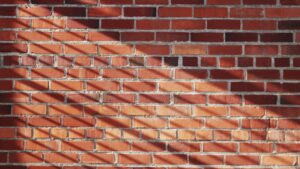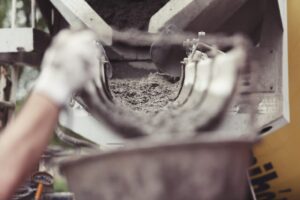Covering the exterior walls often confuses people due to the available options to choose from. Some materials might not have more designs, while others offer various customization possibilities. The different materials are also different in terms of durability and cost. If you are considering covering your exterior walls, here’s a detailed overview of the top 11 popular and worth-considering options to cover exterior walls.
Top 11 Materials to Cover Exterior Walls
Brick
Brick is a popular material that can be found in older as well as newer buildings alike. It gives a top-class physical strength and aesthetic appeal, thus enabling the transformation of any random “property” into a “home.” Bricks are also proven to be durable and sturdy while being known for offering higher energy efficiency.
But while it has all the said benefits, it doesn’t provide design variations, so the chances of being repetitive are much higher. Not just this, but brick is also tough to install, expertise in professional masonry is required, and the repairs can be expensive too.

2. Vinyl
Vinyl is considered one of the most affordable choices, offering various colours and styling options. These are easy to install, and their cost ranges from around $0.85 to $2.50 per square foot, thus being attractive for people on a bit lower budget constraint.
But, Vinyl is vulnerable to damage from moisture, sun, and regular wear and tear. It is made of a plastic-based core, is flammable, and is not environmentally friendly.
3. Wood
Wood offers a variety of options in designs and styles based on how it is milled, thus helping achieve a rich character for the home.
However, it might not be considered a better alternative as it requires a lot of maintenance to stay in better shape. Wood is also vulnerable to fire, pests, moisture, etc., so many issues may arise. Furthermore, wood is also costly, generally ~$5 per square foot.
Still, above all these, wood offers a rich and sophisticated look, offering a higher sense of living. Thus people seeking these must go for wood while covering their exterior walls.
4. Composite
Composite formulas like scrap wood and sawdust offer unique designs and styles for exterior wall covering. It is also known to provide better durability than wood.
Composites carry higher VOCs containing adhesives, and thus they come wrapped with a few safety concerns. If this exterior catches fire under extreme circumstances, it can release harmful gases into the air.
5. Mortar Plaster
Plasters have long been in construction, and they are at the same time decorative enough to ensure a beautiful home exterior. They have lower costs, come in various colours, and offer multiple finishes, making them ideal for homes built using brick walls. Furthermore, mortar plaster is also effective in hiding the cracks in the walls.

6. Stone
Stone offers a sophisticated wall exterior appearance, and it comes in various colour options, including red, grey, brown, and neutral hues. The popular stone types used are limestone, marble, and sandstone.
The cost of getting a stone wall exterior can be exponential due to their weights and the required resources for construction. Their installation costs vary between $10 to $40 per square foot.
7. Fiber Cement
One of the modern ways for exterior walls includes fibre cement that offers strength, beauty, and affordability. It requires relatively lower maintenance and is available in a wide range of styles and colours, including those for recreating natural wood grain look.
Fibre cement has a few drawbacks, and the main thing to know about them is that it can cost twice to thrice the cost of Vinyl. This is mainly because it requires professional installation aid.
Fibre cement offers precisely what one can expect from it and is long-lasting, requiring least maintenance issues.
Aluminium
Aluminium is fire resistant and affordable, making it a higher chosen alternative among homeowners. It also offers various styles, but it is also prone to dents. A few of the variants might also catch rust quickly, and thus, it is not considered durable enough.
8. Steel
Steel is stronger than aluminium and is also known to be longer-lasting. However, it is a bit costly and requires effort to set up, and it is also heavier than the other alternatives and causes rust issues.
9. Stucco
Many homeowners adore the distinctive aesthetic that stucco provides. Stucco is considered energy-efficient, and with good installation, it can survive for many years. The house’s appearance can be swiftly undermined when stucco begins to exhibit indications of ageing, typically represented by water damage and flaking or crackling spots. Although a bag of stucco mix costs less than $10, it requires professional knowledge to apply it properly.
10. Glass enclosures
Glass is another common material used while designing façades. Instead of constructing several apertures, these façades allow ample light into the building. The frames and partitions of the building only create enclosures. For glass façades, maintenance, and sun protection are essential. In this illustration, an extended roof acts as a kind of awning, casting shadows and shielding the glass-covered walls and windows.





